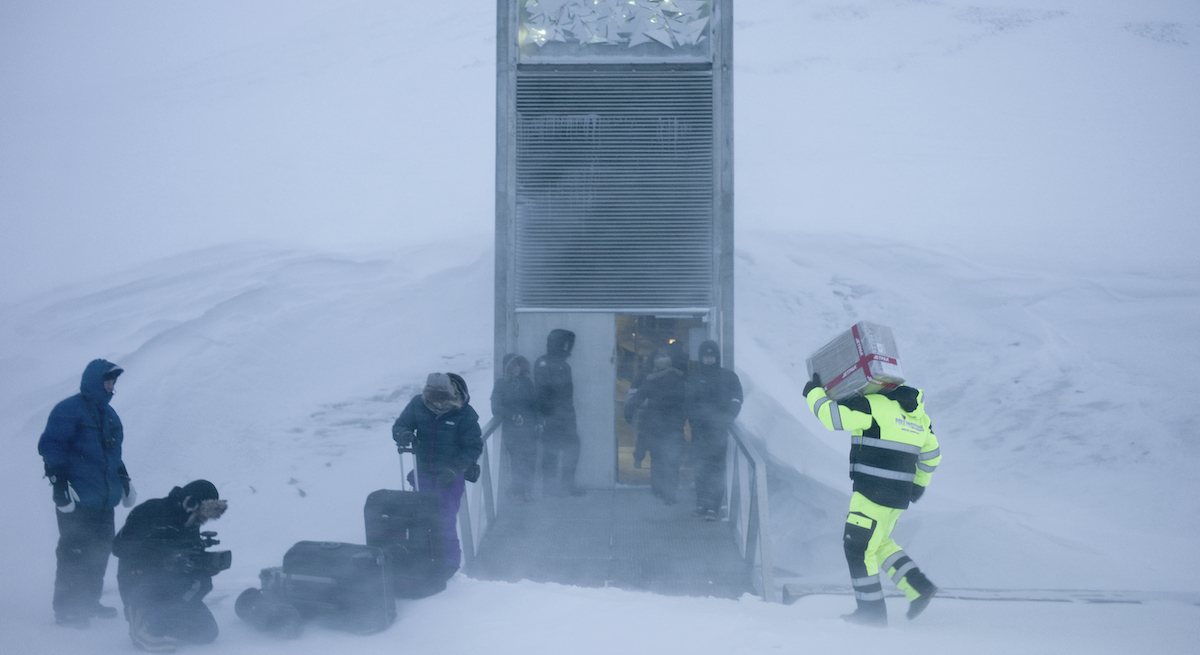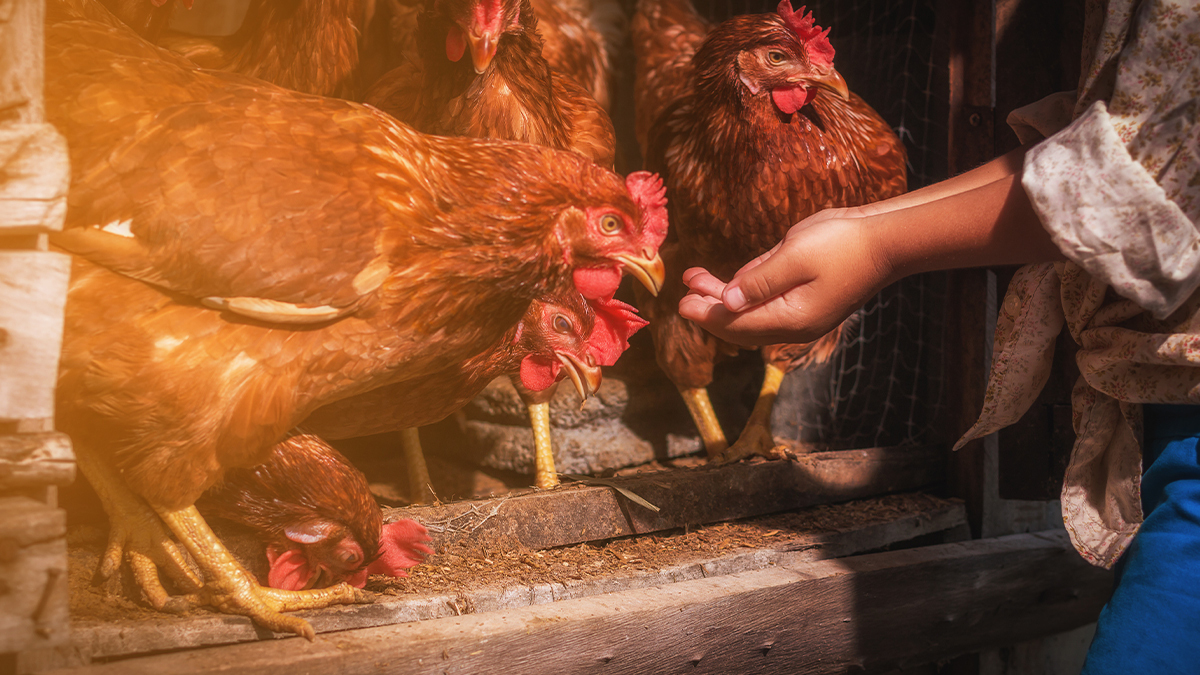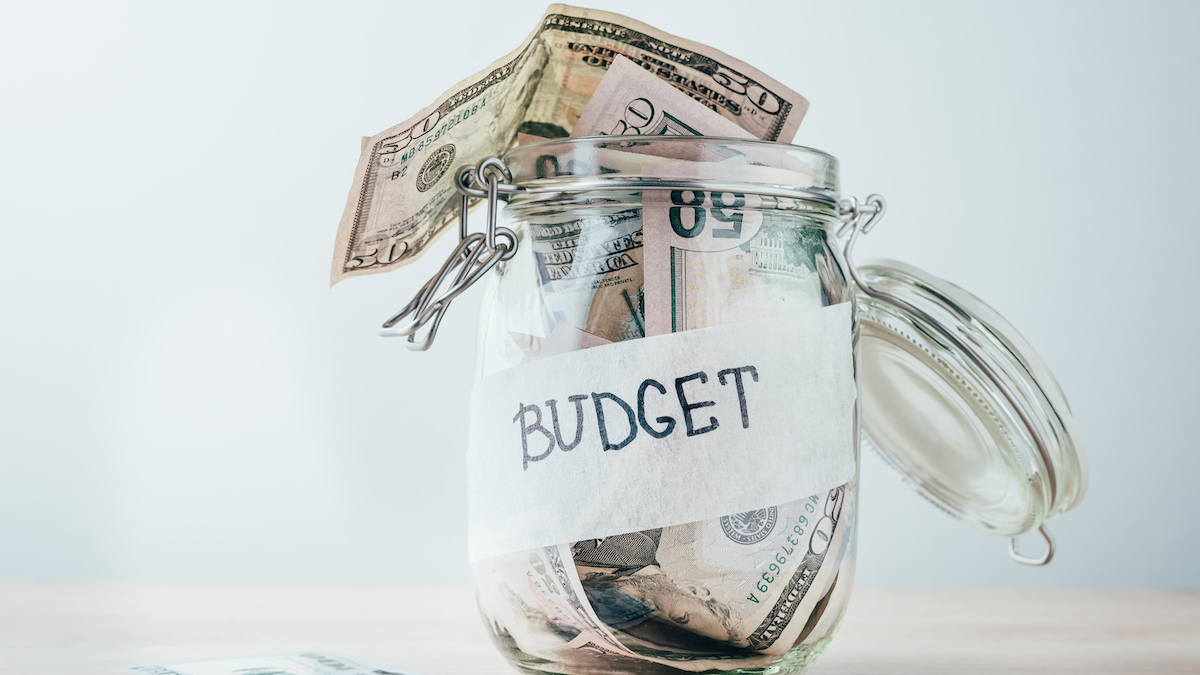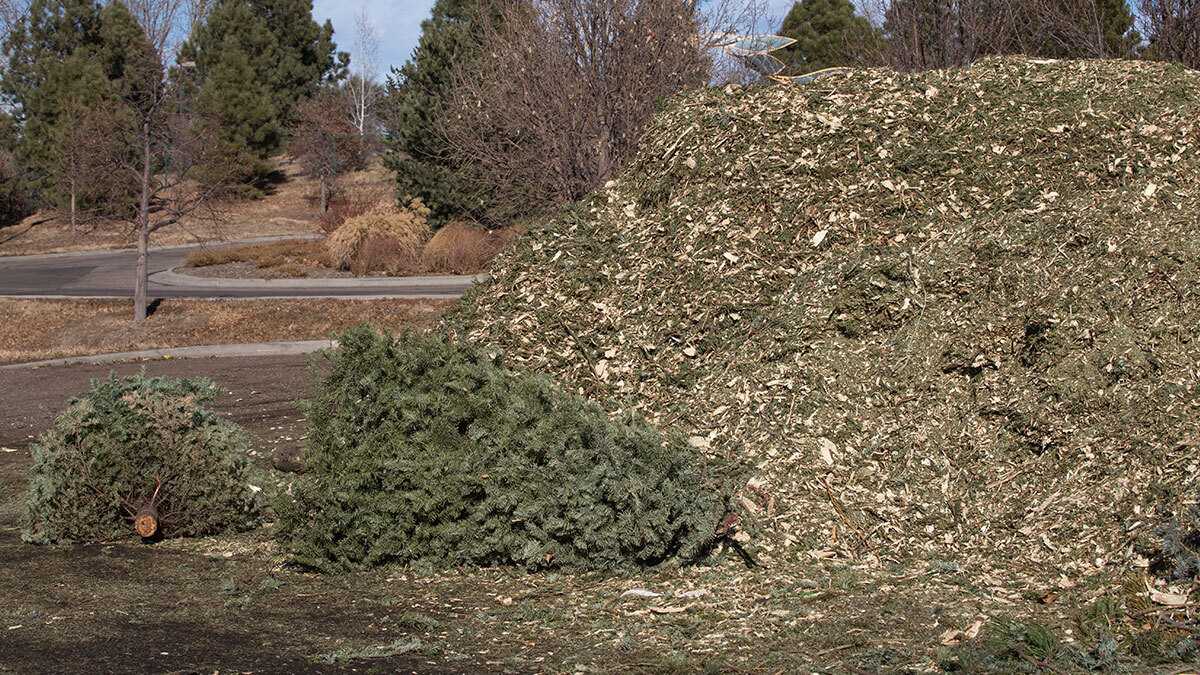on
How to Make a “Svalbard” Seed Vault of Your Own
High up in the wilds of Norway, just 800 miles from the North Pole, sits the town of Longyearbyen. It’s the northernmost settlement in the world, and home to the largest, most diverse collection of seeds anywhere: the Svalbard Global Seed Vault.
Some call the Svalbard Vault humanity’s last lifeline; a complete backup food source in the event of a “doomsday” scenario.
It’s a nice idea…
But let’s be honest. None of us will ever touch a single one of those seeds. If (and when) the peanut butter hits the fan, our fate is in our own hands.
The good news is that the resources needed to build your very own seed vault are available today, and they’re easy to get. Read on to see how.
Why You Need to Build Your Own “Svalbard” Seed Vault
“But Jack,” you might say, “I have buckets and buckets of dried beans. I have more powdered milk stashed away than I could ever drink. I have a year supply!”
“Why do I need more stuff? Why do I need a seed vault?”
It’s a fair question, and the answer is this: true preparedness is about being ready for more than just the “most likely” scenarios. It’s about being fully prepared for the worst-case scenarios.
And in a worst-case scenario, the emergency food storage you have packed away won’t last long enough. You need a sustainable source of food you can live on for years, perhaps even indefinitely.
Seeds are the best way to accomplish that.
What’s a Seed Vault, Exactly?
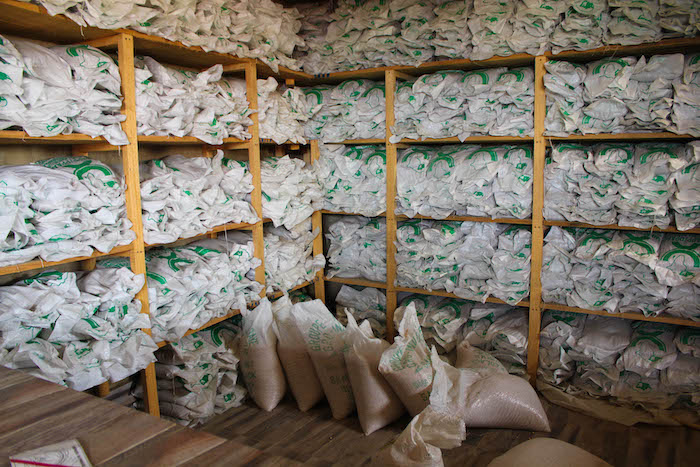
Simply put, a seed vault is a secure place to store away seeds for the day you might need them.
A proper seed vault requires three elements:
A Secure Location – “Secure” means a place where your seeds are safe from the outside world. It also means an environment conducive to seed longevity.
Variety – When we say “variety” in the context of a seed vault, we’re talking about two things:
- First, the types of foods you have available. That means a sensible mix of fruits, vegetables, grains, and more.
- Second, food for a variety of seasons.
Volume – You need a lot of seed to prepare for doomsday. So many, in fact, that your best bet isn’t to rely exclusively on your seed supply, but to learn how to harvest plants for seed.
Let’s discuss each of these elements detail.
A Secure Location: Where and How to Store Your Seed Vault
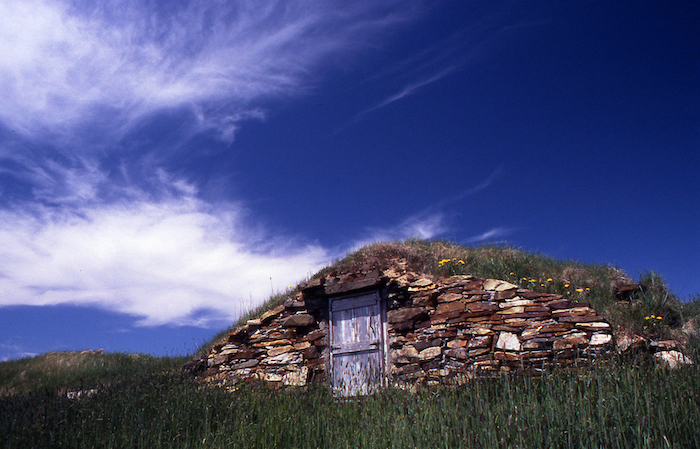
Keep Away from Oxygen and Water – First, as with all long-term foods, oxygen and water are shelf-life killers. Whatever container you use to store seeds, make sure it’s as air and watertight as can be. A glass jar with a screw lid and rubber gasket will do. Also, make sure it’s packed with an oxygen absorber.
Keep Away from Sunlight – Photosynthesis is a miracle…and it’s your job as a prepper to stop it! Keep your seeds away from sunlight. If that means light-blocking curtains or even aluminum foil, so be it.
Store in a Cool, Dry Place – Lots of homesteaders recommend storing your seeds in a freezer, and for good reason. It can extend shelf life up to five years.
We echo that recommendation with a caveat: you may not be able to power a freezer when SHTF. With that in mind, here are some other excellent backup locations for your seed vault:
- A Root Cellar. This is the grand slam. If you’ve got the property for it, consider digging a root cellar. It’s dark and cool year-round. Yes, it’s a project to build, but if you’ve got the will, it’s well worth your time.
- A Basement. This will be the best option for many. A room with a tile or wood floor is best, to keep temperatures down. Cover any windows to eliminate light.
- A Crawl Space Below Your House. This is something like a mix between a root cellar and a basement. It’s not as easily accessible—though some people have found a way to fix that.
How Many Seeds Do You Need?
This may well be the most complicated part of planning your seed vault. There are lots of factors that can influence how many pounds of seed you ultimately buy, and each of them depend entirely on your personal situation.
You have to determine things like:
- How many people are you feeding?
- What crops have you selected for planting?
- What region are you in?
Suffice to say, answering these questions takes either personal experience or guidance from a mentor who lives nearby and knows what works in your area.
Some of the best advice we’ve seen on the subject comes from Kevin at SurvivalBoards, who says:
How much do you usually plant? How much do you usually harvest? [Figure that out and] multiply it by two […] for friends and family coming to your place during long-term collapse. Then I would say [multiply that figure] by at least six [for] three years’ worth of garden. Three years will give you plenty of time to get your [stuff] together, get settled out, and harvest the seeds.
In other words, when planning how much seed to purchase, use the following equation:
Your typical harvest x 2 x 6 = The right amount of emergency seed.
Which Seeds to Select?
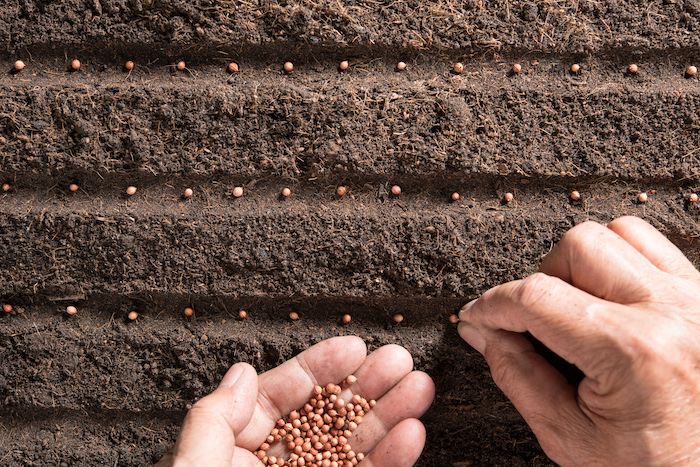
Like we’ve said, choosing seed is a very personal, local decision. It’s going to differ from garden to garden and homestead to homestead. However, there are some general rules that everyone should follow.
Know Your Annuals, Perennials, and Biennials, and Treat Them Appropriately.
- Annuals. Live for only one season. Cucumbers, squash, and lettuce are annuals.
- Perennials. Regrow every spring. These have a shorter period of blooming than their annual counterparts. Asparagus, grapes, and some artichokes are perennial.
- Biennials. Grow for two seasons but save their blooms for the second season. Beets, Brussel sprouts, and cabbage are biennials.
Buy Heirloom Seeds – Heirloom seeds come directly from plants that have already been grown. Many are multi-generational, going back as far as 100 to 300 years.
Prep experts recommend heirloom seeds for the simple fact that they are open pollinated and can be replanted from year to year.
Buy from Reliable Companies. If you’re concerned about avoiding GMOs or getting complete visibility into the origins, genetics, and heritage of your seeds, then be careful about the companies you purchase from. Some multi-national seed manufactures have a poor track record of transparency.
Some Seeds Don’t Store Well. Just like the foods they grow, some seeds have a shorter shelf life than others. These seeds will often go bad at around a year of storage. They include:
- Parsley
- Onions
- Pepper
- Leeks
- Chives
- Garlic
- Shallot
- Parsnip
Many other seeds can last three to five years, depending on storage conditions.
Seed Plants Usually Aren’t for Eating – When you grow a plant to seed, you often have to keep it in the ground well beyond its ideal harvest maturity. The plants need to be at the “flower” stage of growth before they’ll produce viable seeds, and by that time their taste and texture have gone sideways.
And there you have it! Tell us about your seed vault in the comments below.
Image Credits
“West African Agricultural Productivity Program seeds” by World Bank Photo Collection is licensed with CC BY-NC-ND 2.0. To view a copy of this license, visit https://creativecommons.org/licenses/by-nc-nd/2.0/
“When harsh weather, the seed boxes have to be carried individually the last leg by the Seed Vault staff.” by Landbruks- og matdepartementet is licensed with CC BY-ND 2.0. To view a copy of this license, visit https://creativecommons.org/licenses/by-nd/2.0/
“The Root Cellar” by Raphael Borja is licensed with CC BY-NC-ND 2.0. To view a copy of this license, visit https://creativecommons.org/licenses/by-nc-nd/2.0/
Get access to premium content and more!



